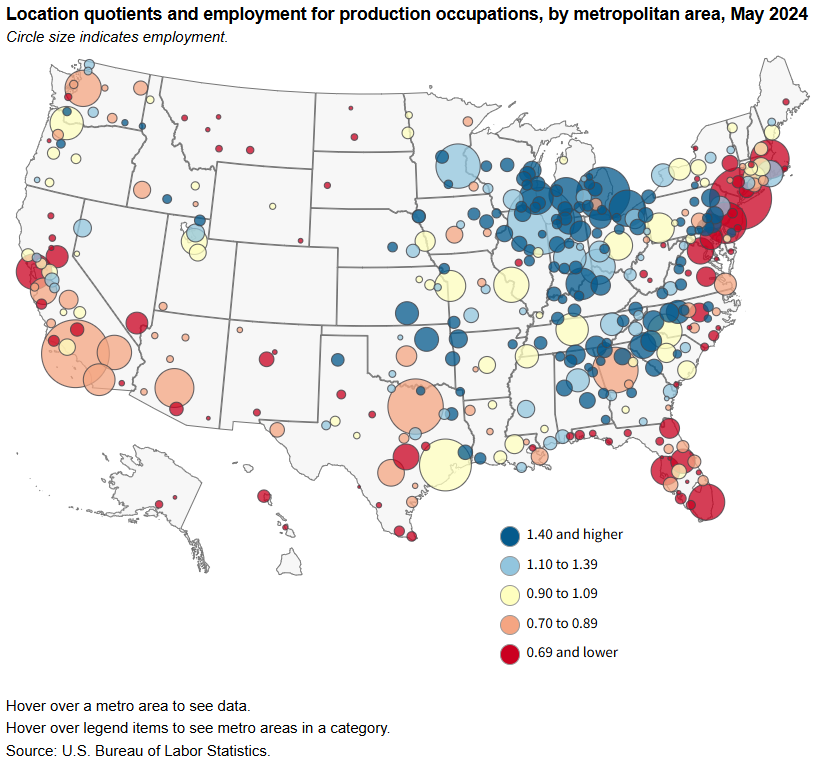The Economics Daily

Elkhart-Goshen, Indiana, had highest employment concentration of production occupations in May 2024
Production occupations had employment of 8.7 million in May 2024, representing 5.7 percent of total U.S. employment. Production occupations include jobs operating machinery or equipment to assemble goods or distribute power and are generally found in manufacturing industries. The largest production occupations were miscellaneous assemblers and fabricators; first-line supervisors of production and operating workers; and inspectors, testers, sorters, samplers, and weighers. read more »
Spotlight on Statistics

A Look at Jobs Paying Less Than $15.00 Per Hour
In response to the Great Depression, the Fair Labor Standards Act of 1938 instituted numerous labor law reforms. These reforms included establishing a federal minimum wage of $0.25 per hour ($5.49 per hour in today’s dollars). The minimum wage was later increased, and its scope extended to cover more workers. The most recent update, bringing the federal minimum wage up to its current value of $7.25 per hour, became effective 15 years ago in 2009. read more »
Beyond the Numbers

As manufacturing sector changes, production occupations disappear: an analysis of employment from 2007–20
The Great Recession and the years of recovery that followed saw sweeping changes to the U.S. economy, including notable changes to the makeup of the labor market and industry employment. In the decade that followed the Great Recession (2010–20), the economy largely recovered; however, the growth in manufacturing sector production jobs did not make up for the 1.5 million production jobs lost from 2007 to 2010. read more »
Monthly Labor Review

Were wages converging during the 2010s expansion?
Wage inequality grew from 2003 to 2013 but either declined or plateaued from 2013 to 2019, depending on the data source, because wage growth was particularly strong among lower-wage workers. read more »